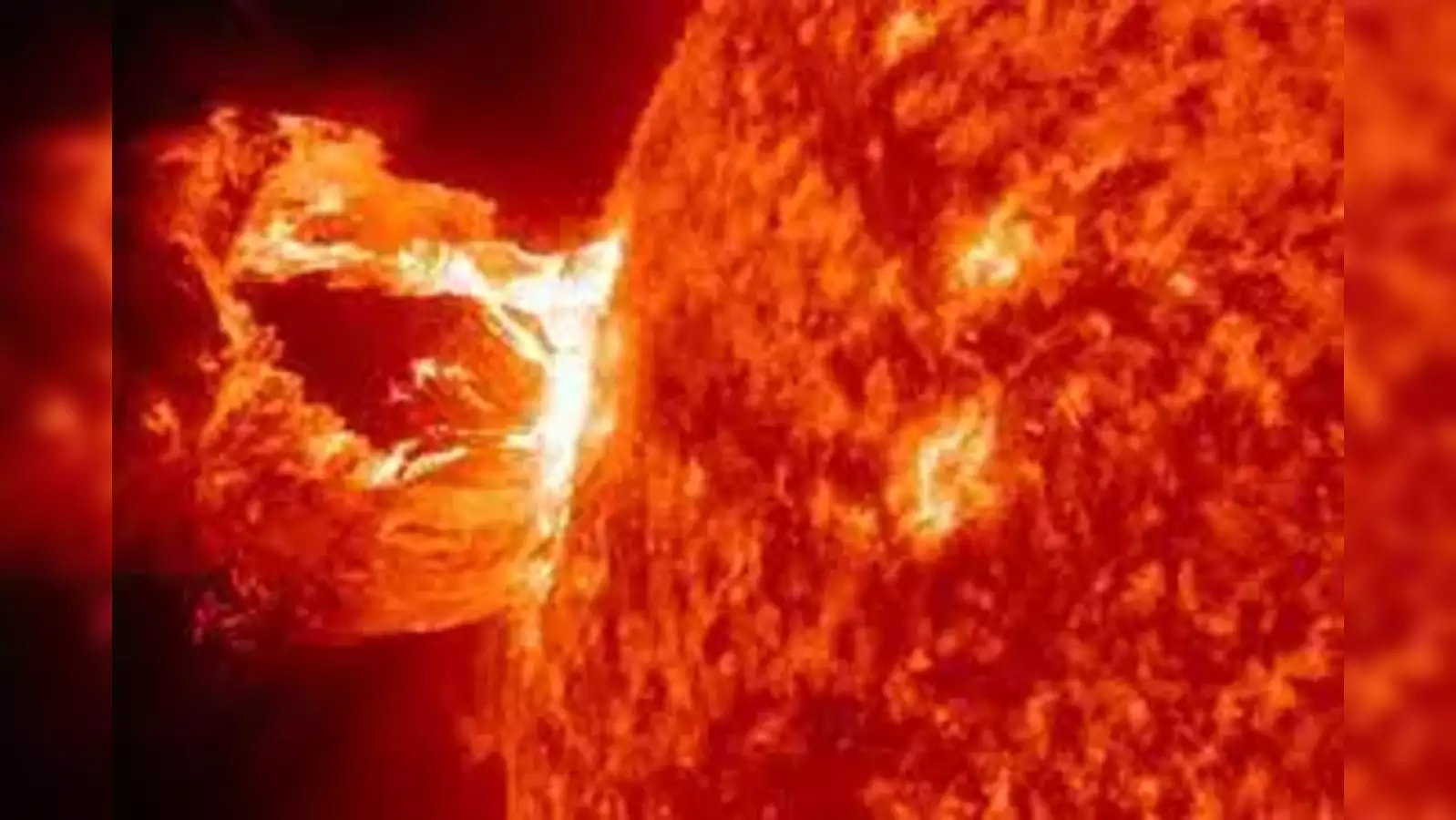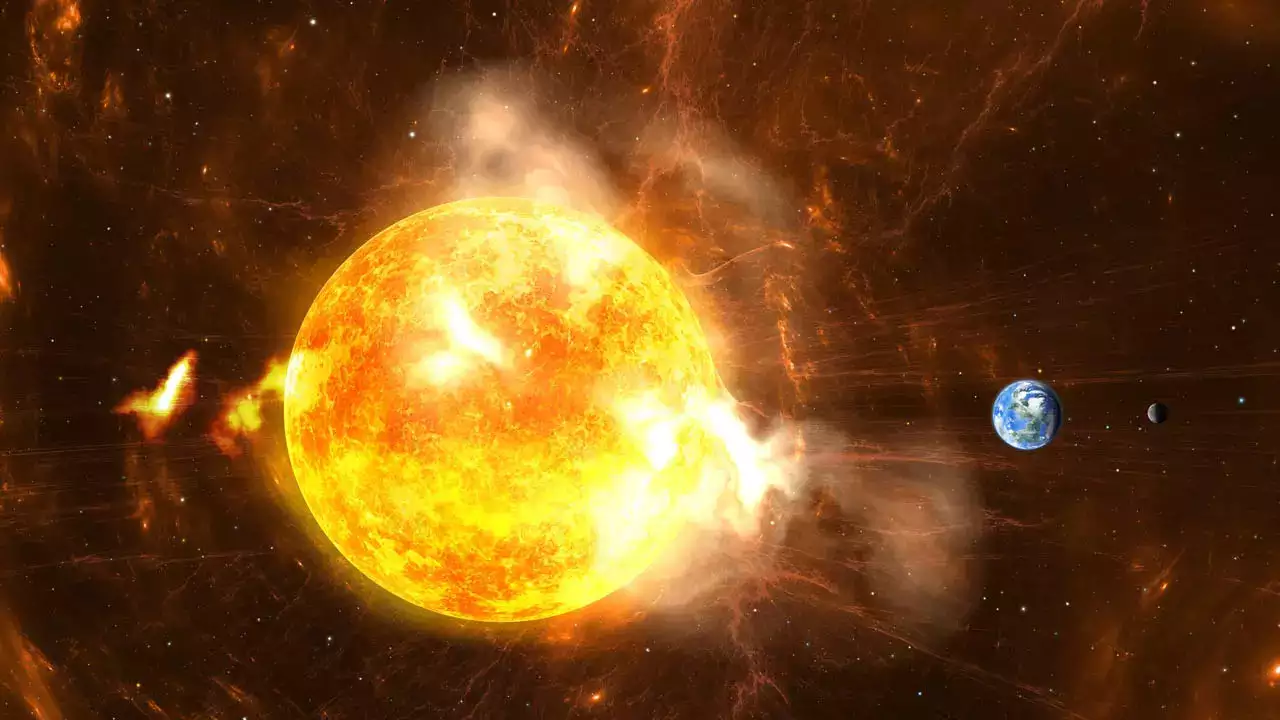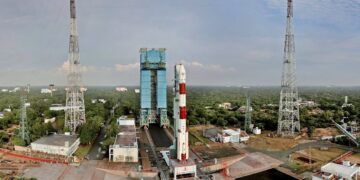
The Sun is directing a strong stream of energetic particles known as a solar storm toward Earth, which may cause radio blackouts and the northern lights, or aurora borealis.
As per NASA’s spaceweather.com, on May 27, a class X2.8 storm—one of the most powerful solar outbursts in recent memory—erupted from the sunspot AR3664. “Giant explosions on the sun that send energy, light, and high speed particles into space” is how NASA describes the strongest solar flares, called X-class flares.
The solar storm has already caused disruptions to shortwave radio on Earth, but fortunately the newest eruption’s coronal mass ejection (CME) will not affect our planet.
According to Ryan French, a solar physicist at the National Solar Observatory in Boulder, Colorado, this starburst caused a massive coronal mass ejection to explode on the side of the Sun facing away from us, as he wrote on .
Also Raed:http://whats-meaning-behind-all-eyes-on-rafah-image-shared-by-millions-on-instagram
When a solar storm reaches Earth, it travels at the speed of light and ionizes, or charges, the upper atmosphere of the planet. Long-distance communication is made possible by the greater density environment created by ionization, which allows high-frequency shortwave radio signals to travel through.
The electrons clash with the radio waves more frequently after being struck by these charged particles, which causes signals to deteriorate or disappear entirely.
The scientific community is increasingly concerned about AR3664, which is scheduled to reappear on June 6. The eruptions at that time have the potential to cause more geomagnetic storms that could have a negative effect on Earth.

What effects do solar flares have on Earth?
Robust solar flares have the ability to unleash a jet stream of kinetic subatomic particles, which frequently produce breathtaking auroral displays.
It is believed that the localized twisting and realignment of the Sun’s magnetic field is what causes solar flares, which are intense outbursts of electromagnetic radiation (and occasionally materials) from the surface of the star. The dayside ionosphere of Earth absorbs the majority of this electromagnetic radiation, which has minimal impact on the globe.
Nonetheless, powerful solar flares have the potential to ionize the upper atmosphere more intensely, dislodging electrons from atoms in the process, obstructing the transmission of communications-related short-wave radio signals. Additionally, solar flares heat the ionosphere, which leads to its expansion and the possible hazard it poses to manmade satellites in low-Earth orbit.
A solar flare that sends a stream of energetic subatomic particles Earthward is a more dangerous situation. These “coronal mass ejections,” or CMEs, can cause massive electric currents to flow through phone lines and electrical distribution networks on the surface of our planet. They also buffet Earth’s magnetic field, squeezing and shaking it. Astronauts may also be exposed to hazardous radiation levels by CMEs.
One benefit of CMEs is that they frequently provide amazing auroral displays in the polar regions of Earth. All things considered, however, neither solar flares nor CMEs have any lasting effects on Earth or on humanity.
Following the impact of a solar storm on Earth on Monday, a radio blackout was observed over the Pacific Ocean. The radio blackouts, which lasted only a few seconds, were reported by earth.com to have occurred off the shores of South America and the western United States at roughly 2.50 am IST and 4.20 pm EST.
On its website, the National Oceanic and Atmospheric Administration (NOAA) also noted the solar storm and gave it an R2 (moderate) classification. Large-scale electromagnetic radiation eruptions from the Sun that can continue for hours or minutes are known as solar flares. Since the abrupt release of electromagnetic energy travels at the speed of light, any impact on the exposed outer atmosphere of Earth that is exposed to sunlight happens simultaneously with the event’s observation.

How does a radio blackout result from a solar storm?
The D-layer, the lower, denser layers of the ionosphere, is where ionization is created during a strong enough solar flare, according to NOAA. Radio waves that interact with electrons in layers lose energy as a result of the more frequent collisions that take place in the D-layer’s higher density environment.
The strong stream of energetic particles also affected the poles, and the outage lasted for around seven hours, according to the earth.com report.
This is one of the solar storms that the Sun has been releasing since the new year. According to NOAA’s Space Weather Prediction Center, there is a 60% possibility that the current storm may cause grid disruptions.
On Wednesday, another solar storm is predicted to arrive, which might worsen satellite operations and have additional effects on radio and aviation communication.
Magnificent auroras are predicted to be produced by the occurrences, and they are predicted to reach northern Wyoming, South Dakota, Iowa, Wisconsin, Michigan, New York, New Hampshire, Vermont, and Maine.
The approaching storm was reported by physicist Tamitha Skov, who frequently shares updates concerning solar storms on different venues.
“One or possibly two solar storms are on their way to Earth today! The first one fired close to Region 3555 on the Sun. On January 22, early to midday, it is predicted to occur. The second storm is a side-swiping one that forms close to 3559. It could deal us a slight blow on January 23. In the Earth-strike zone at the moment is an unstable filament as well. If it goes live
This may result in the degradation or absorption of high frequency radio waves. As a result, there is a radio blackout, which affects the 3 to 30 MHz range and causes no HF transmission. ALSO RAED :-https://livendtv.com/delhi-water-crisis-2024/







































Comments 4